RDS Console Redesign
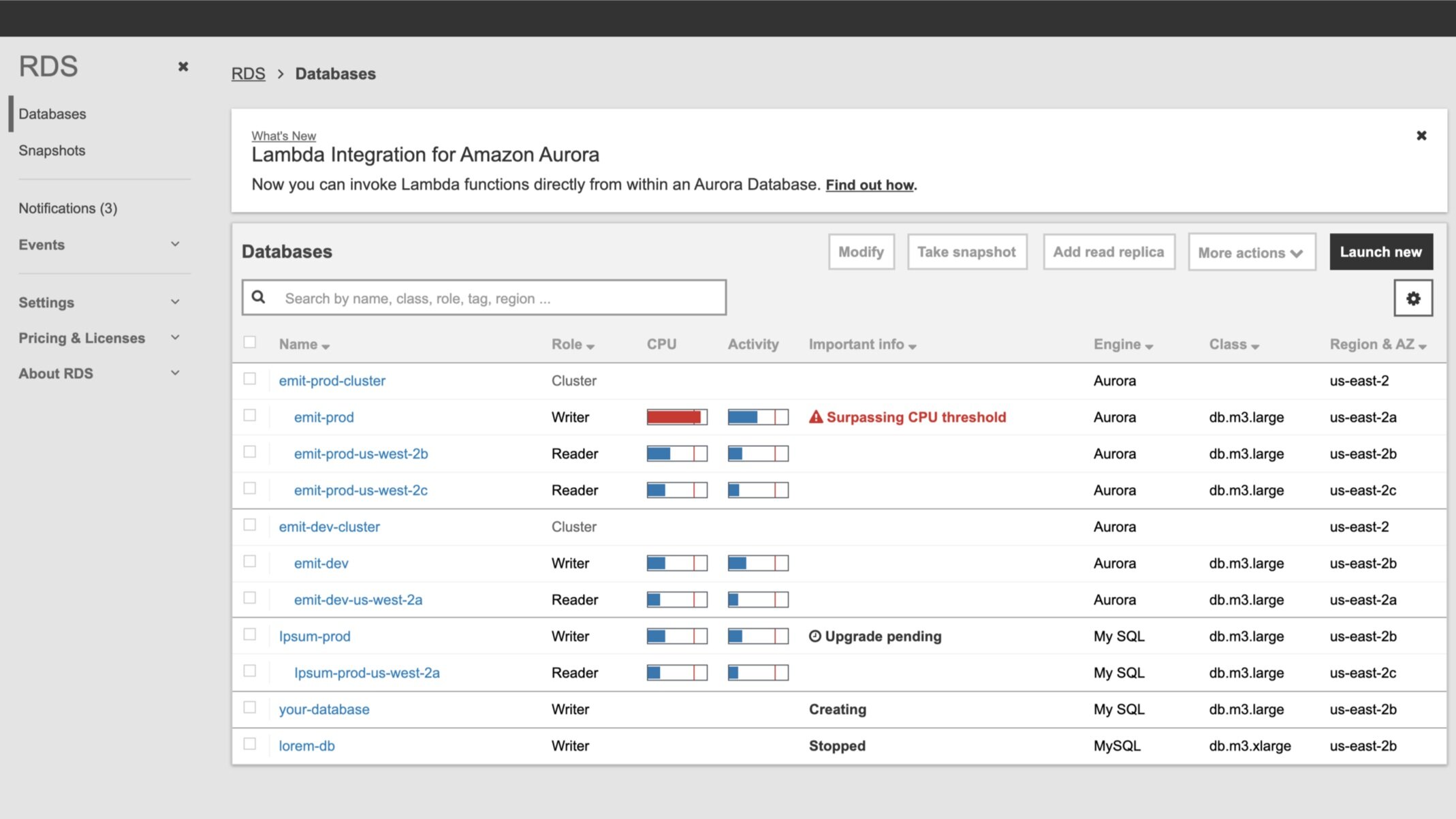
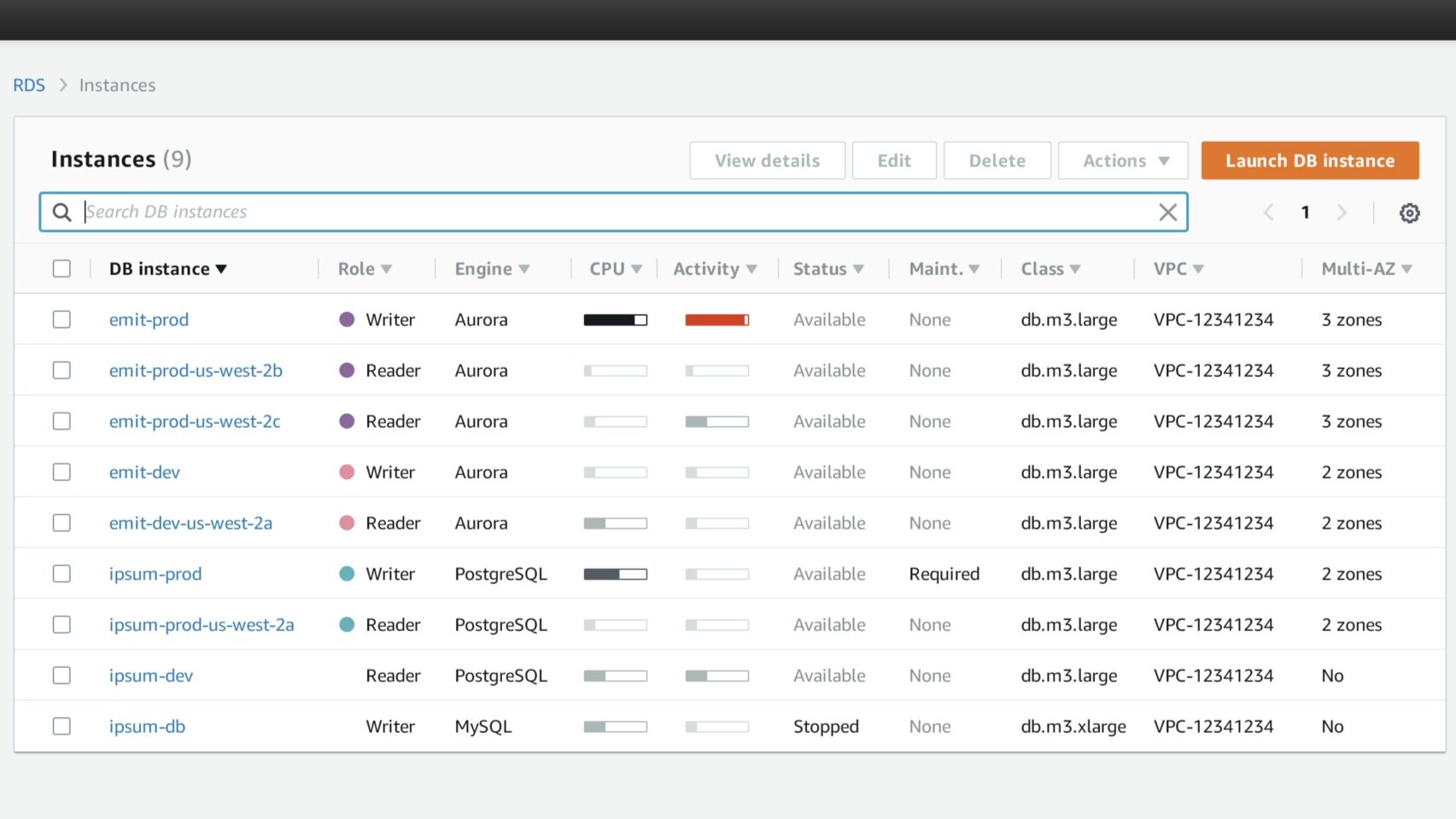

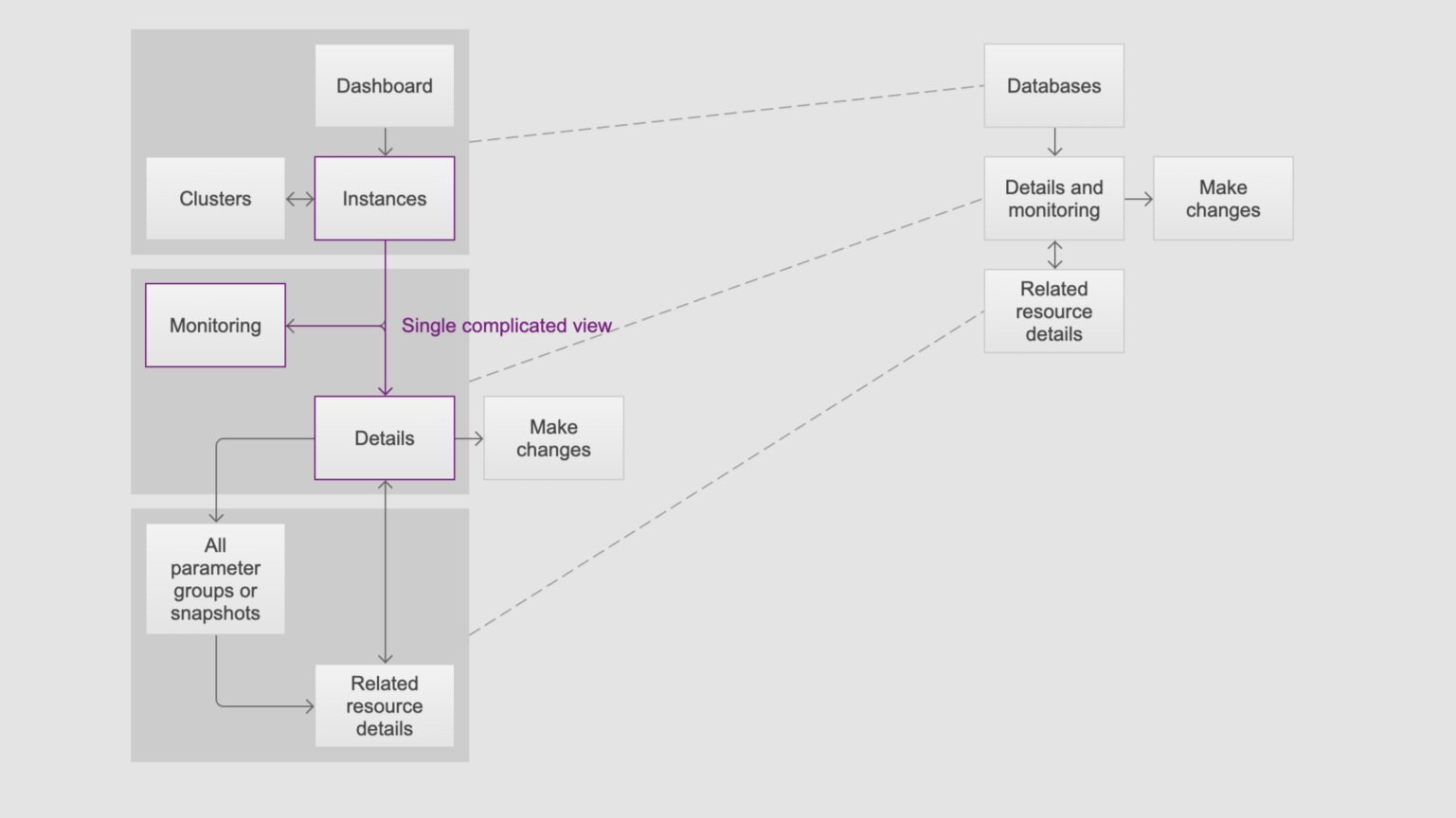

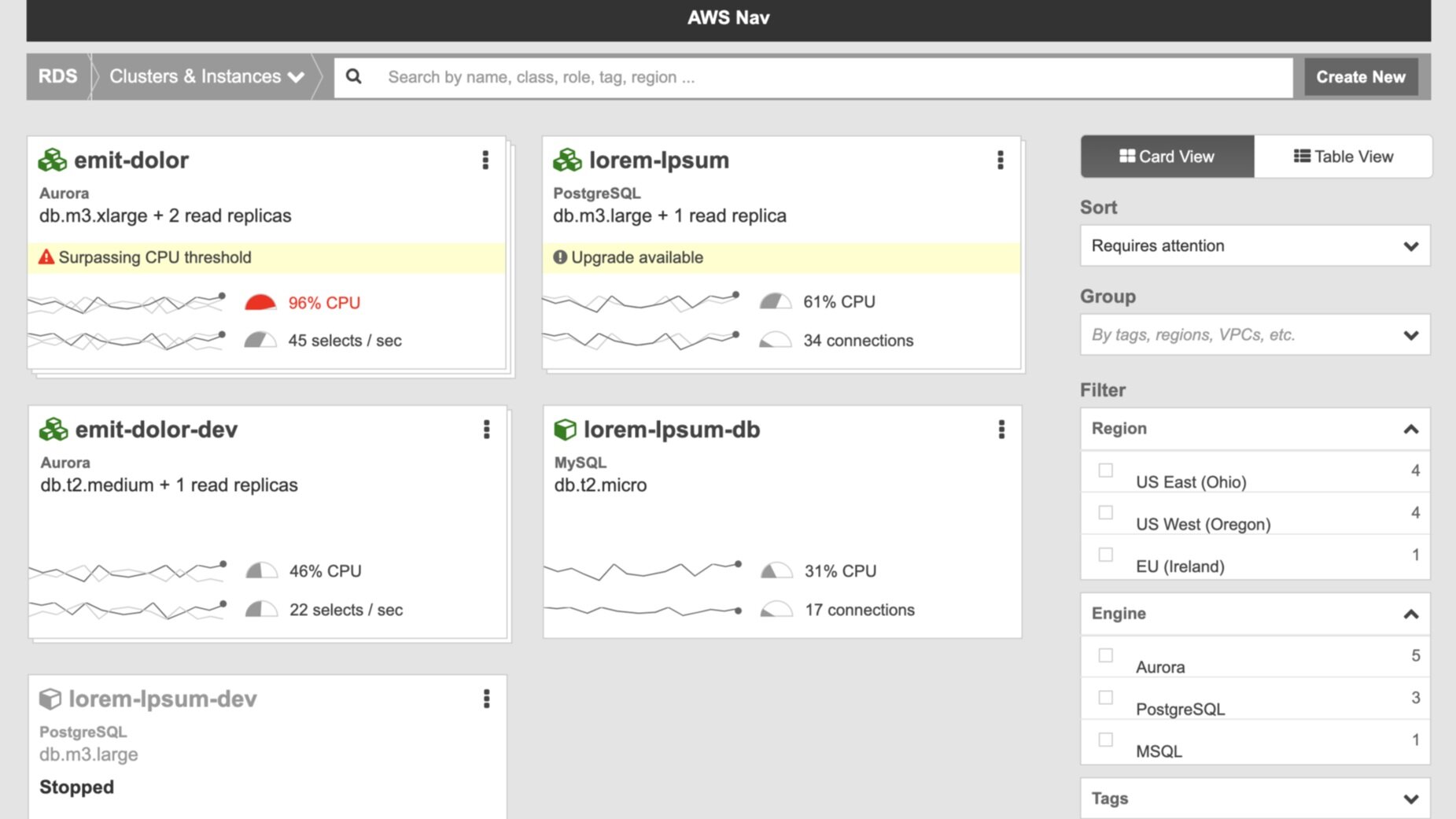
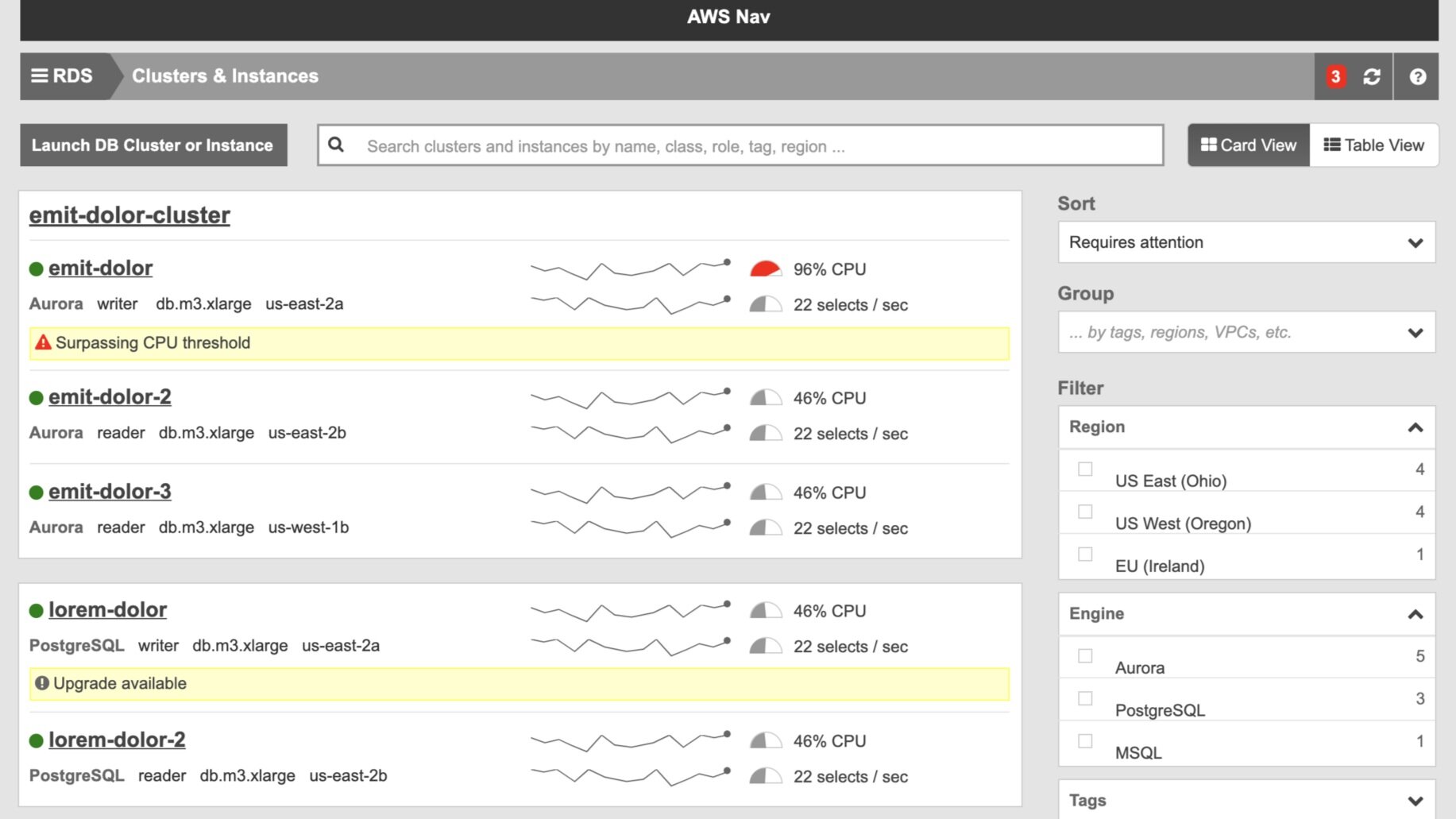
Challenge
The AWS Relational Database Service (RDS) is a cornerstone service, powering countless applications. However, as user adoption and feature sets grew, the RDS console became increasingly complex and difficult to navigate. This led to user frustration, inefficient workflows, and ultimately, impacted the overall user experience of a critical AWS offering.
Goal
To significantly enhance the usability of the RDS console by:
Reducing task completion time for key workflows by 15%.
Improving the discoverability of key features by 20% (measured by task success rates in usability testing).
Simplifying the user experience for both novice and expert database administrators.
Increasing user satisfaction (as measured by post-interaction surveys) by 10%.
Increasing usage of the console by 5%.
Process & Approach
As the UC design lead for this project, my approach was rooted in user-centered design principles, focusing on a deep understanding of user needs and iteratively validating design solutions. I followed these key steps:
User Research & Understanding: I began by conducting contextual interviews with 15 active RDS customers, representing a range of experience levels and use cases. These interviews revealed how users integrated RDS into their workflows, identified key pain points with the existing console, and surfaced a prioritized list of desired features.
Persona Development: Based on the research, I developed detailed user personas representing various levels of database and cloud expertise (Novice, Intermediate, Expert). These personas served as a crucial lens for evaluating both the existing console and our proposed redesigns, ensuring we addressed the needs of a broad user base.
Iterative Prototyping & Testing: I created an interactive prototype incorporating immediate usability improvements and high-priority features from the customer wishlist. This prototype was then subjected to rigorous usability testing sessions with 8 representative users. Feedback from these sessions informed iterative refinements to the design, ensuring a user-validated solution. The refined prototype was then reviewed with product management and the development team to plan implementation and prioritize features for phased rollout.
Key Design Decisions & Insights
Intuitive Representation of Relationships:
Problem: The most frequent user complaint (mentioned by 80% of interviewees) was the difficulty in understanding the relationships between different RDS resources (instances, snapshots, configurations, etc.). Users thought in terms of logical "databases," not individual instances.
Solution: I redesigned the list and detail views to reflect this mental model. In the list view, related instances are visually grouped, clearly indicating their roles (e.g., primary, read replica). The detail view for multi-instance databases features a persistent context bar at the top, allowing users to quickly switch between related instances.
Rationale: This design directly addressed the core user need for a clearer understanding of resource relationships, simplifying management of complex database setups and reducing cognitive load.
Impact: Showing related instances next to one another decreased the time it took to find and act on related instances by 25%.
Addressing the Needs of Both Novices and Experts:
Problem: Initial assumptions focused primarily on novice users, neglecting the needs of experienced database administrators who still relied on the console for specific tasks.
Solution: My research revealed that expert users (60% of those interviewed) primarily used the console for two critical tasks: rapid prototyping of new database configurations and troubleshooting issues with existing deployments. Both tasks highlighted a crucial need: the ability to easily translate console actions into equivalent CLI commands.
Design Implication: This insight broadened the project scope. We prioritized features that facilitated the transition from console to CLI, such as displaying CLI equivalents for console actions. I also presented these findings to the broader AWS console pattern team, advocating for a consistent approach to CLI integration across all services. This led to a new initiative to incorporate CLI command display as a standard pattern.
Impact: The collaboration with the larger AWS console pattern team led to the creation of a new standard to include the CLI equivilent in every console.
Streamlining Workflows & Removing Unnecessary Steps:
Problem: Users reported that the console often introduced unnecessary steps, leading to wasted time and potential for errors (an average of 2 extra clicks per common task).
Solution: I conducted a thorough workflow analysis, identifying and eliminating redundant steps across key user journeys. A prime example was the original landing page, which was overwhelmingly bypassed by users (95% click-through rate to the database list view, based on analytics).
Design Change: I redesigned the landing page to be a focused onboarding experience for first-time users only. Returning users are automatically directed to the database list view, with new feature education delivered through non-intrusive, dynamic modules within the list view itself.
Impact: Eliminating the unnecessary landing page for returning users saved an average of 3 seconds on every visit to the console.
Ensuring Interaction Consistency:
Problem: Inconsistent interaction patterns across different views (e.g., expanding rows in one list view versus navigating to a detail page in another) caused user confusion and frustration (reported by 7 out of 8 usability testing participants).
Solution: I adopted a new set of design patterns from the broader AWS console team, ensuring consistent behavior for common interactions (e.g., row selection, expanding/collapsing sections) throughout the RDS console. This created a more predictable and intuitive user experience.
Impact: After the redesign, users reported frustration with interaction inconsistencies 75% less often.
Outcomes & Impact
The first phase of the redesign, focused on implementing the new design system and fixing interaction inconsistencies, resulted in a 12% reduction in average task completion time for key workflows (measured through a combination of before/after usability testing and analytics data). User feedback, gathered through post-interaction surveys, indicated a significant improvement in perceived usability (an average increase of 1.2 points on a 5-point scale) and overall satisfaction.
I provided the RDS team with a prioritized roadmap of features and designs, informed by user research, to guide subsequent development phases. This ensured that future work would continue to be driven by user needs and contribute to the ongoing improvement of the RDS console.
Beyond the immediate project, this work had a broader impact on AWS by highlighting the need for improved console-to-CLI integration, influencing the development of new design patterns adopted across multiple services. This demonstrated the power of user-centered design to drive not only product improvements but also organizational change.
Key Learnings
Deep user understanding is paramount: Contextual inquiry provided invaluable insights that challenged initial assumptions and led to more effective, user-centered design solutions.
Iterative design and testing are essential: Continuous feedback loops ensured that the design evolved to meet real user needs and validated design decisions.
Collaboration is key: Working closely with product management, engineering, and the broader AWS design community ensured alignment, facilitated broader impact, and fostered a shared commitment to user experience.
Consistency matters: Users expect consistent and predictable experiences. Inconsistency leads to confusion, frustration, and ultimately, a less efficient workflow.
Design can drive organizational change: By demonstrating the impact of user-centered design, this project helped to advocate for a more user-focused approach across AWS.


